How to Start Community Agroforestry Projects: Advice from 11 Forest Gardens
 Print This Post
Print This Post
By Katherine Favor
For the past two years, I have had the privilege of documenting the stories of urban agroforestry projects around the country, thanks to generous funding from the National Agroforestry Center and the U.S. Botanic Garden. Agroforestry is the intentional integration of trees into cropping and/or livestock systems, inspired by Indigenous wisdom, and it can be applied in many ways and in many different places – even in cities! One agroforestry practice commonly implemented in cities is community forest gardens, which are edible and medicinal landscapes with multiple vertical layers of vegetation, designed to mirror the structure and function of an early-succession forest. As more people in urban areas seek ways to reconnect with nature, nurture biodiversity, and promote sustainable food production, community forest gardens have emerged as an ancient solution to a modern problem.
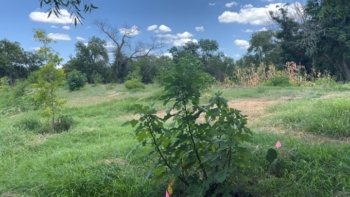
The Tamox Talom Food Forest, a newly planted food forest in San Antonio, Texas. Photo: Katherine Favor
Through the course of this project, I got the chance to talk to 11 community forest gardens in seven regions of the U.S., from Boston to Seattle to Miami and beyond. At each site I learned something new about how to plan, design, manage, and maintain these kinds of urban agroforestry systems in a way that benefits the community as a whole. We combined their stories into 11 videos, five publications, and one podcast, and I hope these resources can serve as inspiration and a roadmap for others who want to start similar projects.
There is detailed information about how to start a community forest garden project in the many resources we’ve developed, but to sum it up, here are the top 10 words of wisdom garnered from the sites we visited:
- Figure out your “why.” What are the principal problems your community deals with and why do you want to start a community forest garden? Does the city have problems with food insecurity? Biodiversity loss? Lack of camaraderie among neighbors? Lack of local food? Hot summers and an oppressive urban heat island effect? Figure out what the problems are that you’d like to address and design your forest garden layout, composition, and activities in a way that addresses those problems.
- Find your people. The most important thing to ensure the sustainability of a community forest garden is to get community buy-in. Talk to your neighbors. Host potlucks where people can brainstorm together. Post flyers with links to input surveys. Host design charrettes. Do people actually want a forest garden in their neighborhood? If so, why? What do people want to see in their forest garden? What about forest gardens gets people excited? What are the skillsets, knowledge, experiences, and resources that the community could contribute to a forest garden or community orchard? Developing relationships and ensuring community buy-in is the most important thing when starting any community project.
-
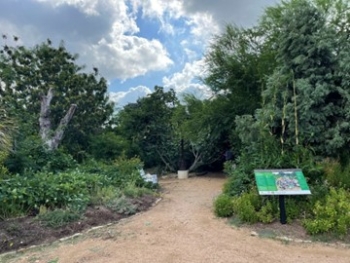
The Festival Beach Food Forest, a public community forest garden in downtown Austin, Texas. Photo: Katherine Favor
Get to know your geographic area. There are a number of tools you can use to get to know your urban area, in order to design your forest garden in a way that satisfies the needs of the community. USDA Plant Hardiness maps can help you determine what plants grow best in your climate. American Forests has a tool called the Tree Equity Score, which tells you how evenly distributed trees are in your city and your specific neighborhood. The USDA Food Access Research Lab is a tool that identifies which parts of your city lack access to fresh food. All these tools can help you identify the best place in your city to plant a forest garden and what its composition could look like, to improve the environment, ensure equitable distribution of trees, and secure food access.
- Find land. There are lots of ways to find land for a community forest garden. You can lease city or county land, lease or buy private land and allow it to be open to the public, or see if the city will sell marginalized land at a low cost to be put into a community land trust. Cities and counties sometimes are eager to relinquish management of undevelopable or marginalized parcels of land, so check with your local Parks Department or Department of Development to see if they might be willing to lease or sell any of this land for an accessible price.
- Communicate with the city or county often. Cities have many regulations when it comes to urban agriculture projects, but they also might have resources that they can contribute. To ensure you are in compliance with municipal regulations, talk with your city about zoning, ordinances, how you will access utilities, what kinds of structures are allowed on your site, insurance, hours of operation, etc. Ask your city government if they might have resources they can contribute to your project, such as free mulch from city tree trimmers, watering services, or mowing services. Resources and regulations will differ from city to city, so it’s important to have clear and consistent communication with your municipality.
- Working in the garden is fun but figure out who’s going to do the “behind the scenes” work. There are many administrative tasks that come with maintaining a community agroforestry project, such as doing accounting, holding insurance policies, covering administrative costs, managing volunteers, and applying for grants. It can be helpful to create a nonprofit or partner with a fiscal sponsor to help with these administrative tasks.
- Make sure your site is safe. Locate hidden below-ground utilities by calling the “811 Call Before You Dig” hotline, so that no pipes, wires, or cables are damaged when you plant. Look for above-ground power lines, too, and take care to not plant trees next to them. Soil testing is another important part of ensuring that food grown in urban areas is safe for human consumption. Test for heavy-metal toxicity and if results come back highly contaminated, contact the EPA and see if they can do a Phase I Environmental Site Assessment.
- Remediate your soils. Urban soils are often nutrient-poor and depleted, but with proper soil management, they can become fertile ground for planting relatively quickly. Follow the five principles of soil health to create organic matter quickly and ensure a healthy soil for your trees. If soils are severely depleted, consider planting in raised garden beds.
- Educate the community about the space. To use and enjoy a community forest garden, the community must know what it is and how they can interact with it. Tools like webinars, informational Instagram posts, signs, QR codes, apps with geolocations of trees, trainings, plant identification walks, and learn-by-doing volunteer days are ways you can teach the public what a forest garden is, how to grow their own food, how to identify plants, and how to harvest.
- Ensure the sustainability of your project by engaging consistently with the community and making it fun. A common goal of many urban agroforestry projects is to foster social connections and improve the community’s physical and psychological wellbeing. Make the space inviting and fun so that people continue using it, showing up to maintain it, and protecting it far into the future.
These are just a few words of wisdom for creating community forest gardens, and it’s just the tip of the iceberg, so be sure to check out all of our resources if you want to learn more. Community forest gardens can contribute to sustainable urban landscapes, nurturing both nature and communities alike. Maybe your town will be home to the next one!
Related ATTRA Resources:
Community Forest Gardens: Case Studies from Throughout the United States
Episode 240. Urban Agroforestry for Dryland Environments
Urban Agroforestry Case Study: Utilizing Agroforestry In Floodplain Restoration Projects
Urban Agroforestry Case Study: Starting a Food Forest on Public Park Land
Urban Agroforestry: Bringing the Jungle Back to the Concrete Jungle
Urban Agroforestry Tipsheet: Food Forests And Beyond
Video: Growing Community and Climate Resilience
Video: How the Tamöx Talöm Food Forest is Building Community
Video: Managing Turfgrass in Urban Agroforestry Systems
Video: Navigating City Code and Regulation in Urban Agroforestry Projects
Video: Regenerating Damaged Soils on an Urban Farm
Video: Restoring a Floodplain Buyout Area with Agroforestry
Video: Tools for Creating an Equitable Urban Forest Canopy
Video: Using Urban Agroforestry to Support Native Texas Ecosystems
Video: Community Education and Engagement in a Public Food Forest
Video: The Ecological Design of a Texas Food Forest
Video: Starting a Food Forest on Public Park Land
Other Resources:
American Forests’ Tree Equity Score
USDA Environmental Research Service Food Access Research Atlas
This blog is produced by the National Center for Appropriate Technology through the ATTRA Sustainable Agriculture program, under a cooperative agreement with USDA Rural Development. This blog was also made possible in part by a cooperative agreement with the United States Botanic Garden, and by a grant from the U.S. Department of Agriculture (USDA), Forest Service, National Agroforestry Center, under the authority of the Cooperative Forestry Assistance Act of 1978. These institutions are equal opportunity providers, employers, and lenders. ATTRA.NCAT.ORG.



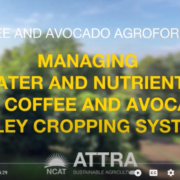


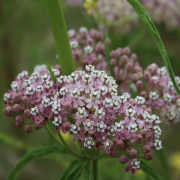

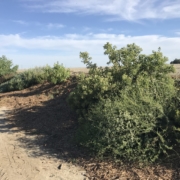

 Jean Ogdon/ Creative Commons
Jean Ogdon/ Creative Commons